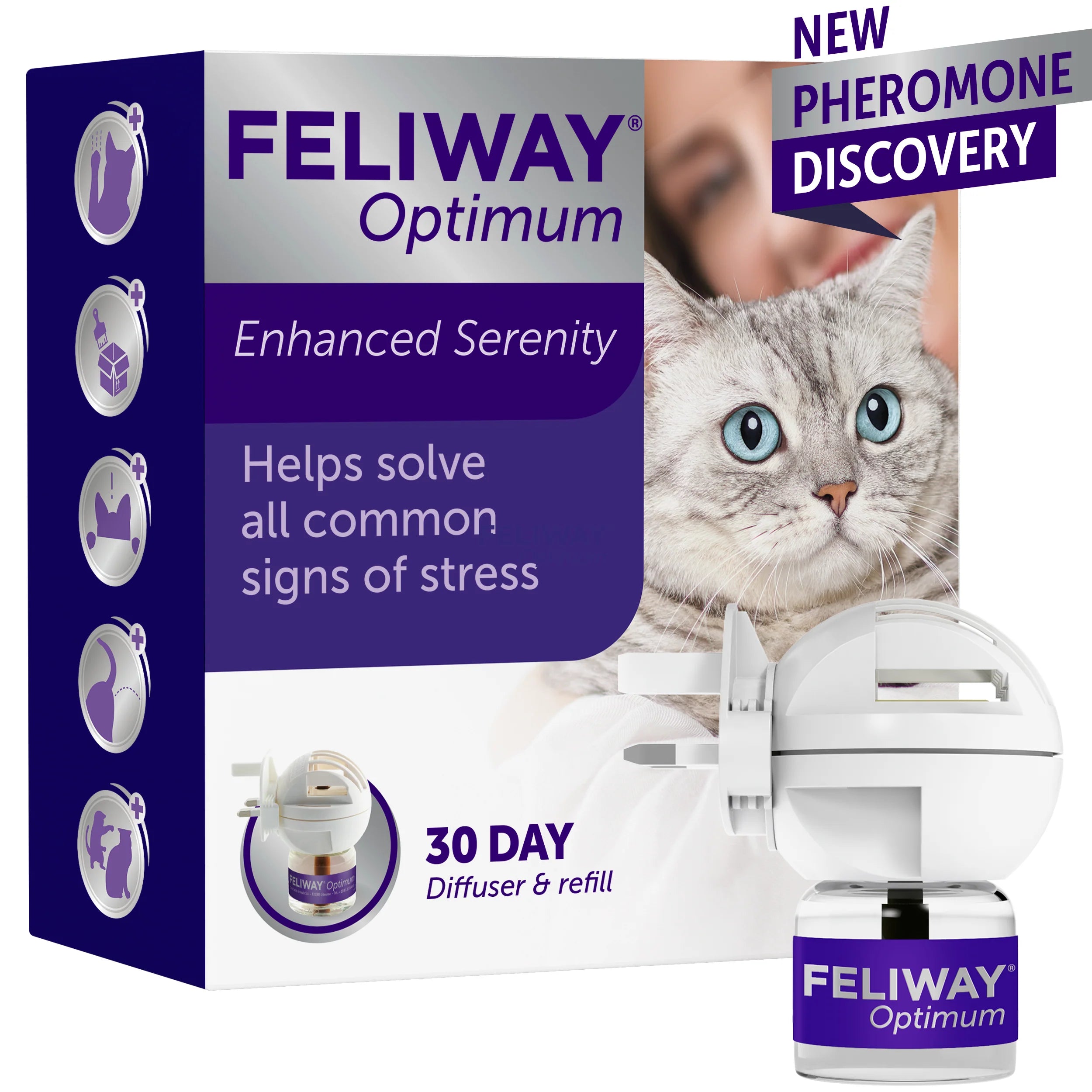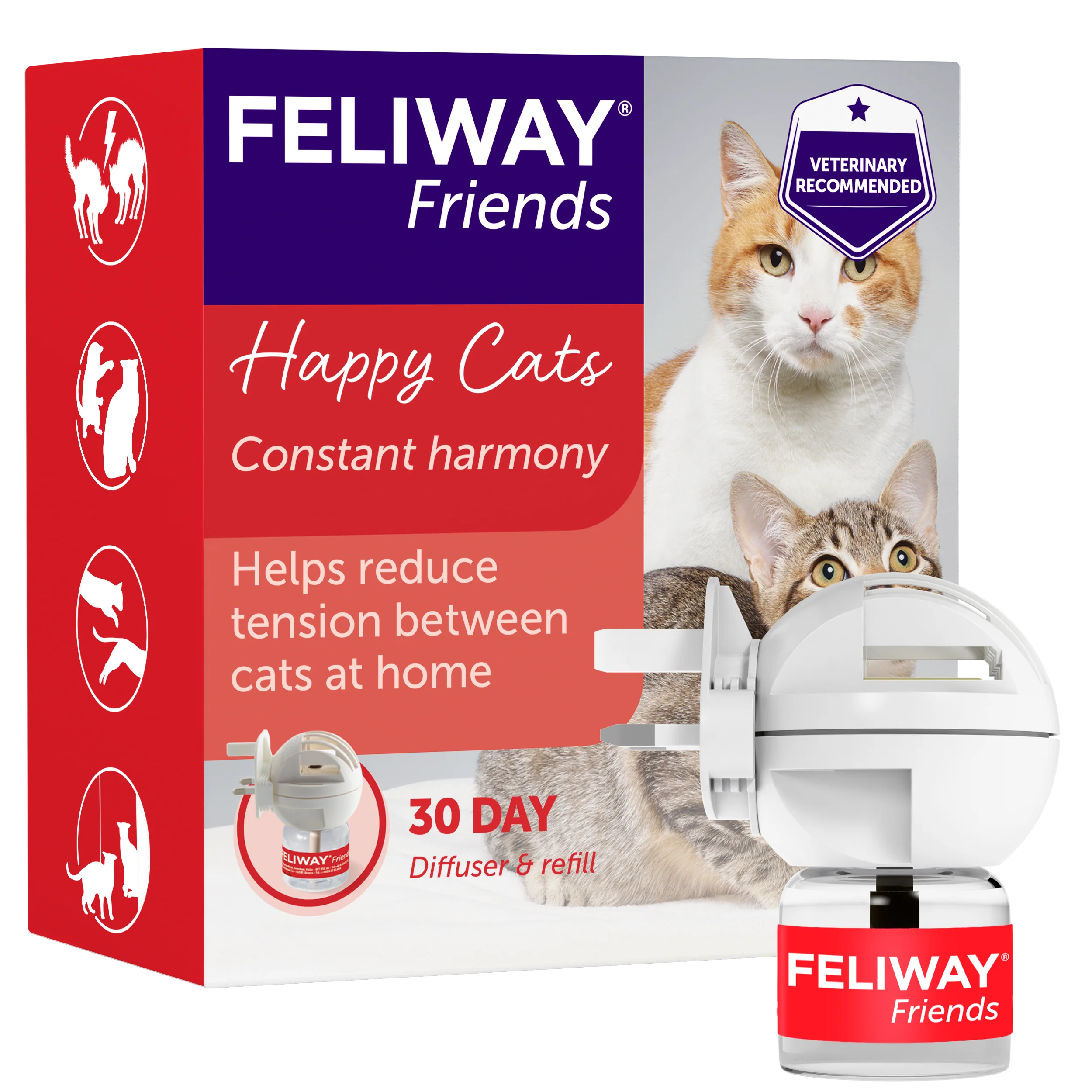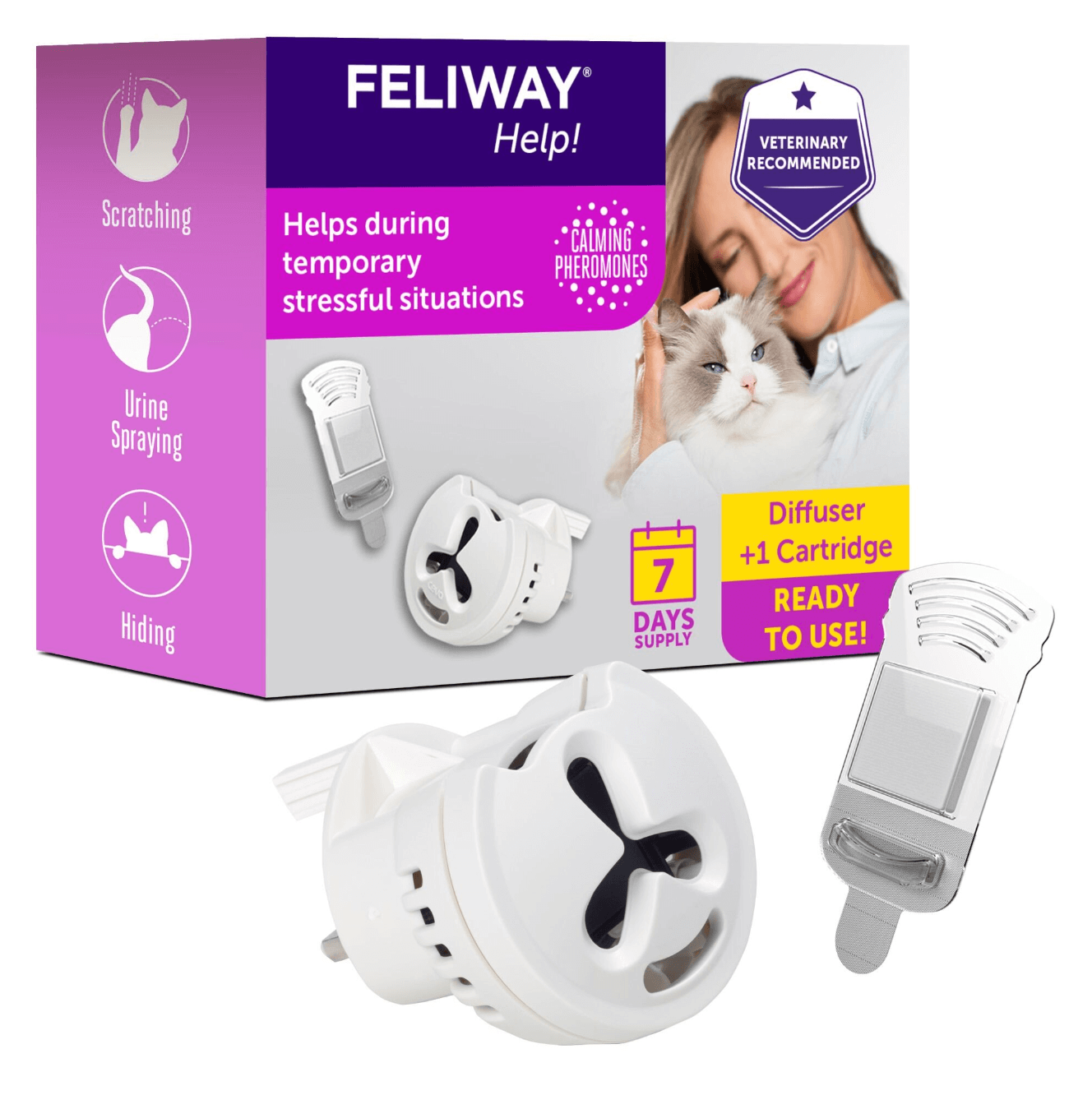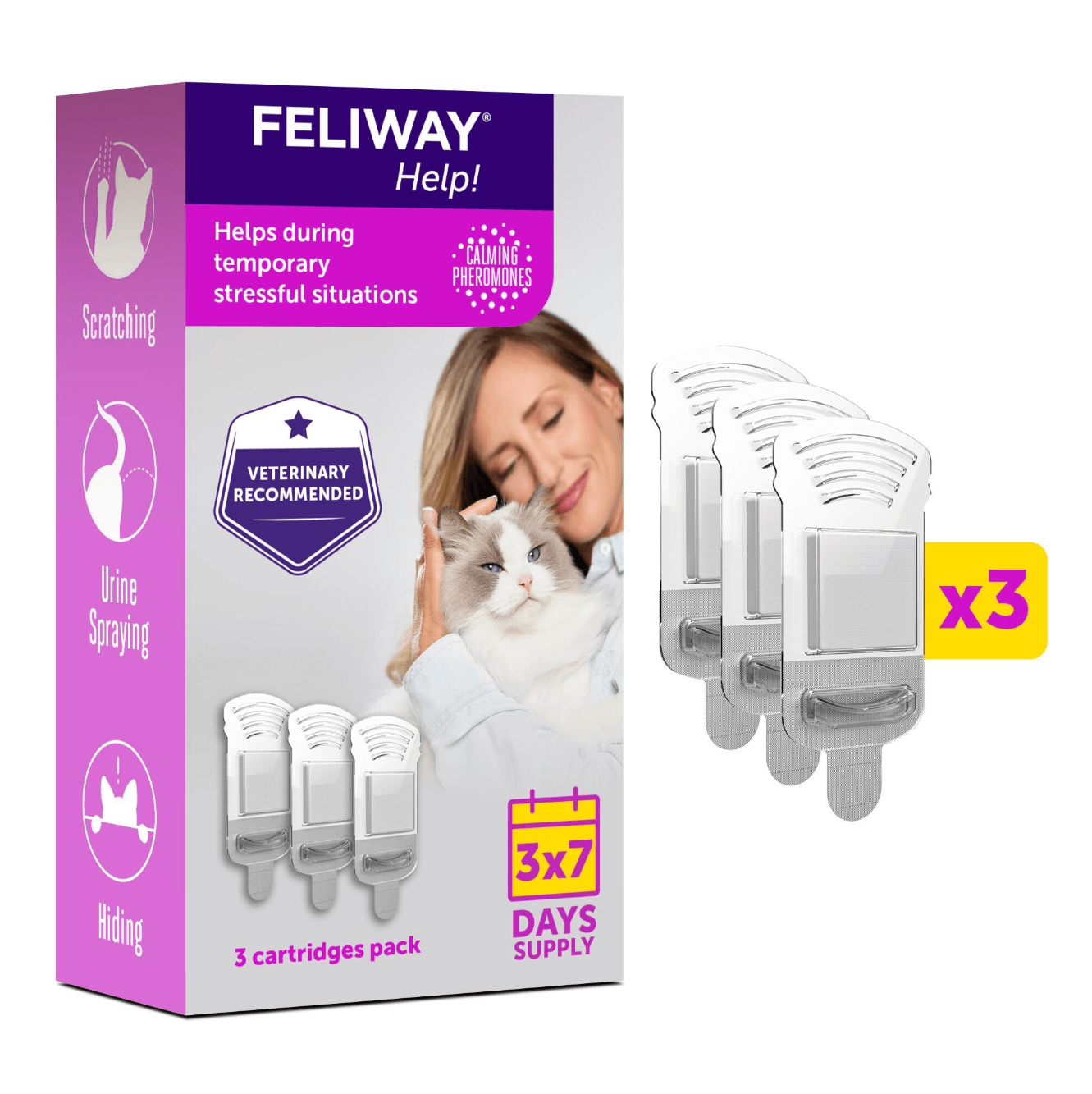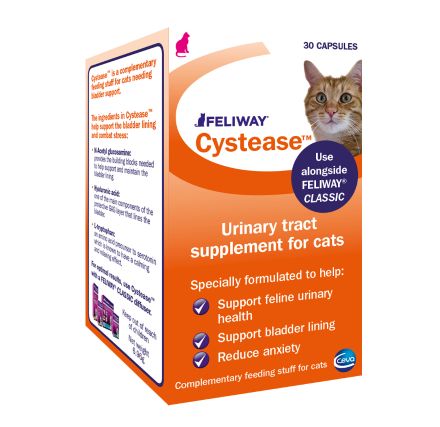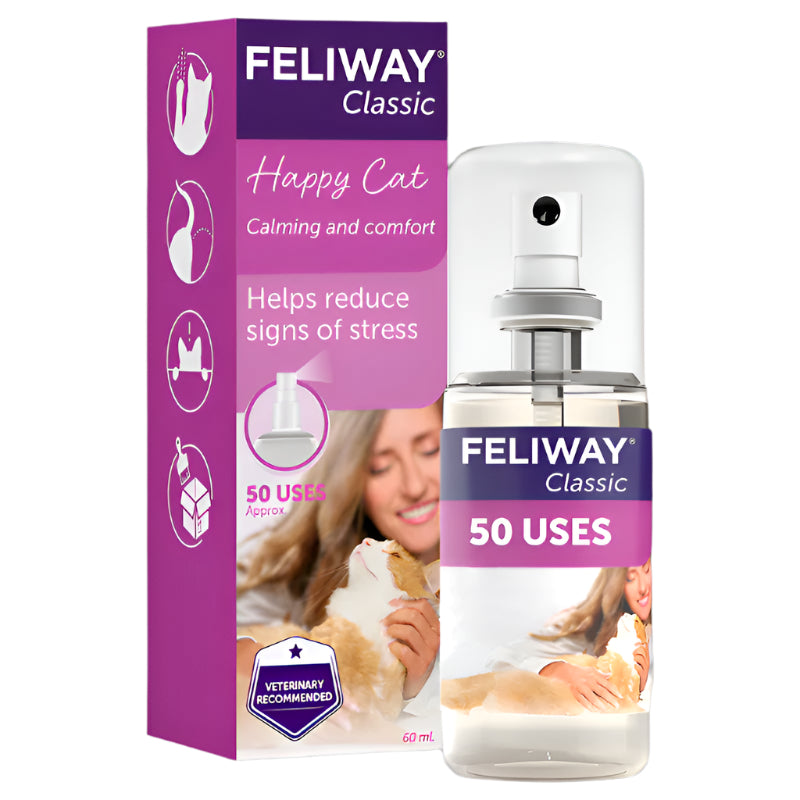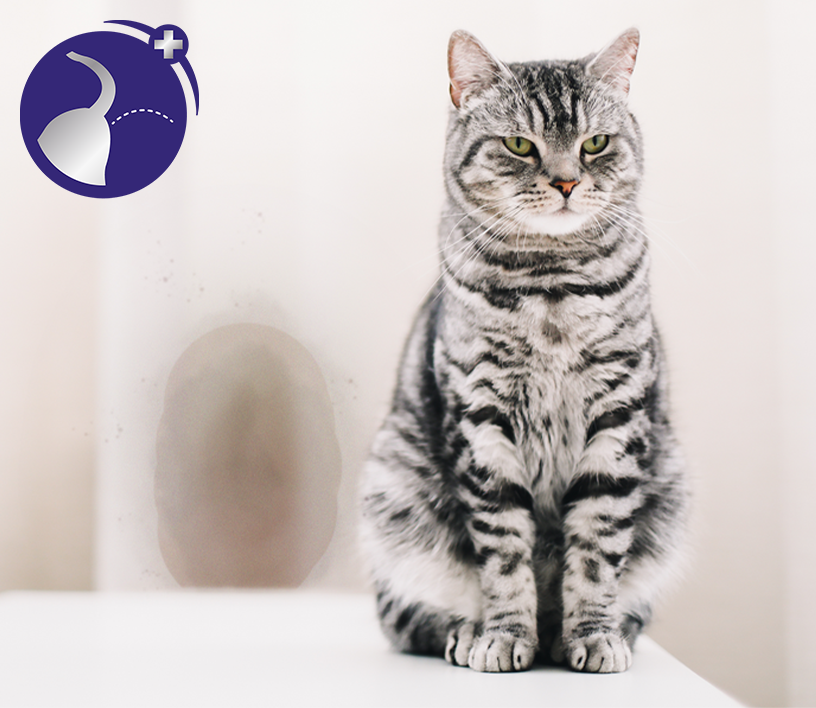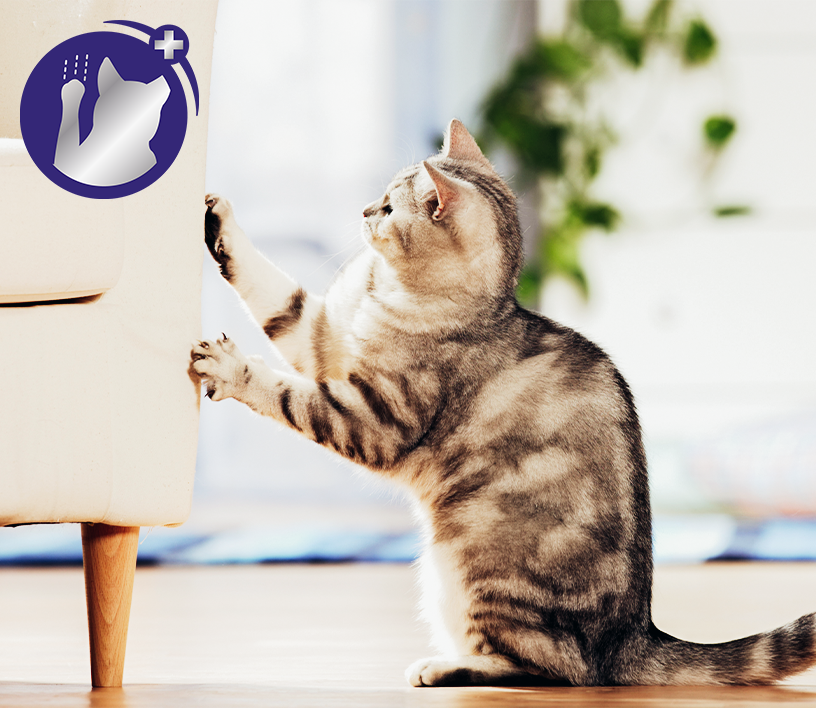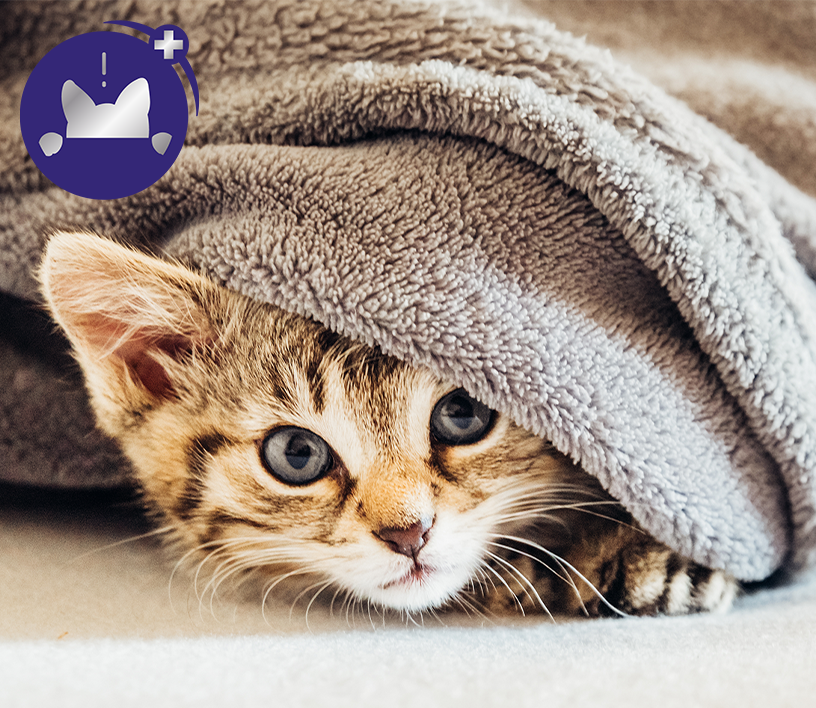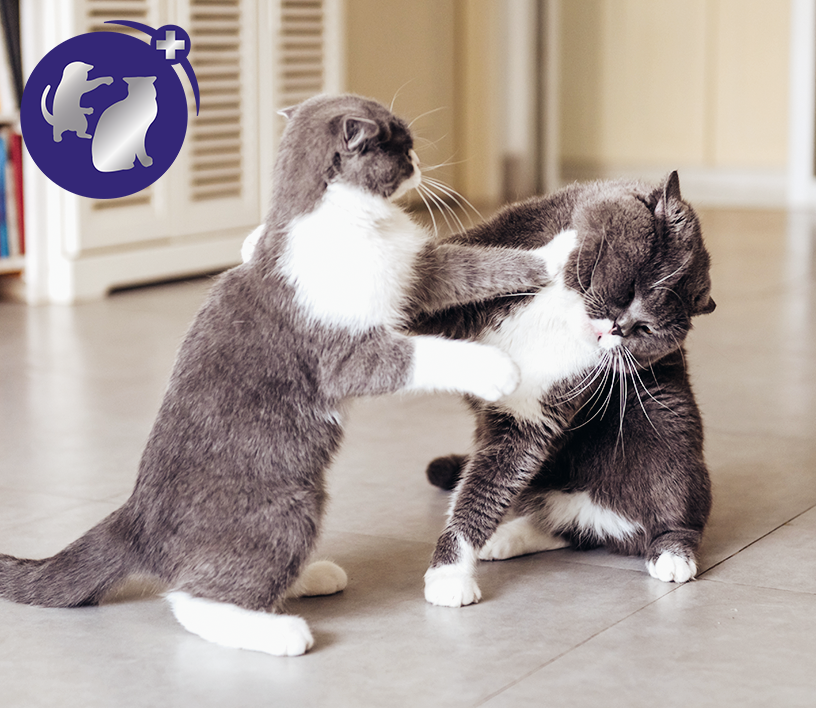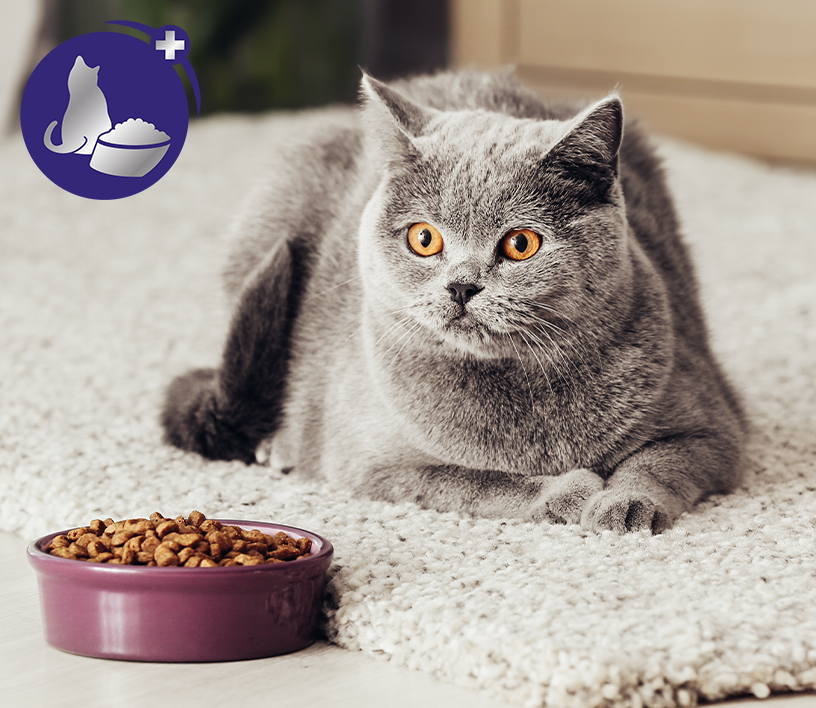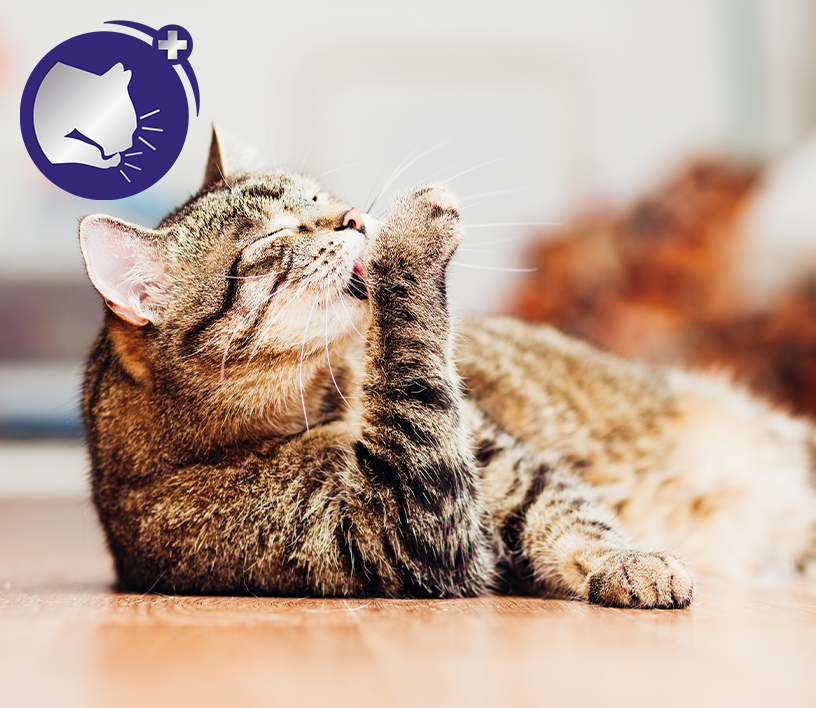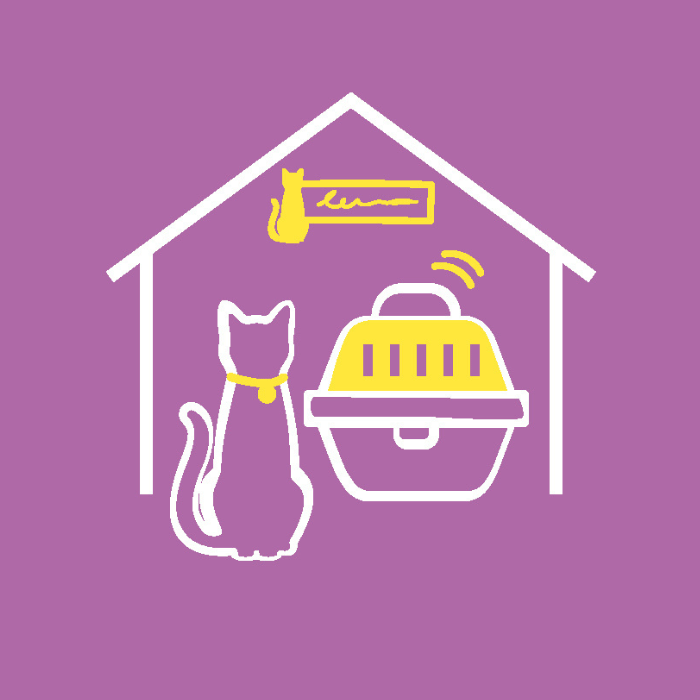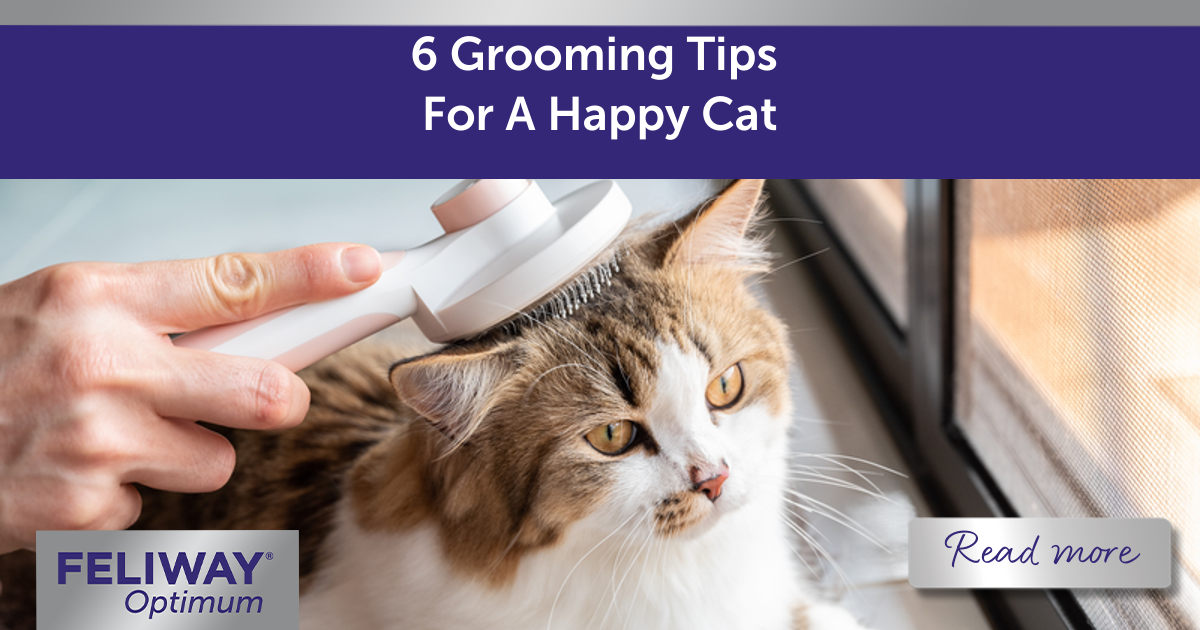
6 Grooming Tips For A Happy Cat
As any lover of cats knows, our feline friends have some truly impeccable grooming habits. In fact, cats spend a significant portion of their day doing very little else! All the same, there are times when it can be a good idea to step in and ensure your cat’s coat is in top shape, especially as we draw closer to shedding season.
Remember, proper cat grooming isn’t just about our cats’ appearance. It’s about their health and happiness too! So, what we can do to help? Keep reading for our 6 grooming tips to guarantee a beautifully well-brushed cat.
Understanding A Cat’s Coat
Cats are famous for their self-grooming abilities. Their tongues are equipped with tiny bristles that act like a comb, helping them maintain a clean and healthy coat. Interestingly, this innate grooming behaviour isn’t just about cleanliness. It’s also thought to be a way for cats to regulate their body temperature and stimulate skin oils, which give their fur its healthy sheen.

The type of coat cats can have can vary greatly, from the sleek, short hair of a Siamese to the fluffy, long layers of a Maine Coon. Each type of coat requires different care, and while cats can be incredibly self-reliant, it’s still important for us humans to lend a helping hand wherever we can. Regularly brushing a cat helps remove excess fur, preventing hairballs from forming, and gives us a chance to check for any skin issues like fleas or ticks.
Looking Out For Unusual Cat Grooming Behaviour
On this note, it’s important to mention what you should do if you notice your cat is grooming in one spot more than usual. Sometimes this behaviour can go so far as creating a bald patch, though the signs won’t always be so visible. Generally speaking, this could be an indicator of an underlying medical issue, so it’s recommended to speak with a vet immediately.
Alternatively, this could also be your sign that a cat is feeling stressed. Question whether anything has changed in your cat’s routine recently as this could potentially explain any changes in their behaviour and mood. You can also try plugging a FELIWAY Optimum into the room in which your cat spends most of their time. This pheromone diffuser works by releasing comforting pheromones into the air, helping cats to feel reassured and enhancing their serenity.
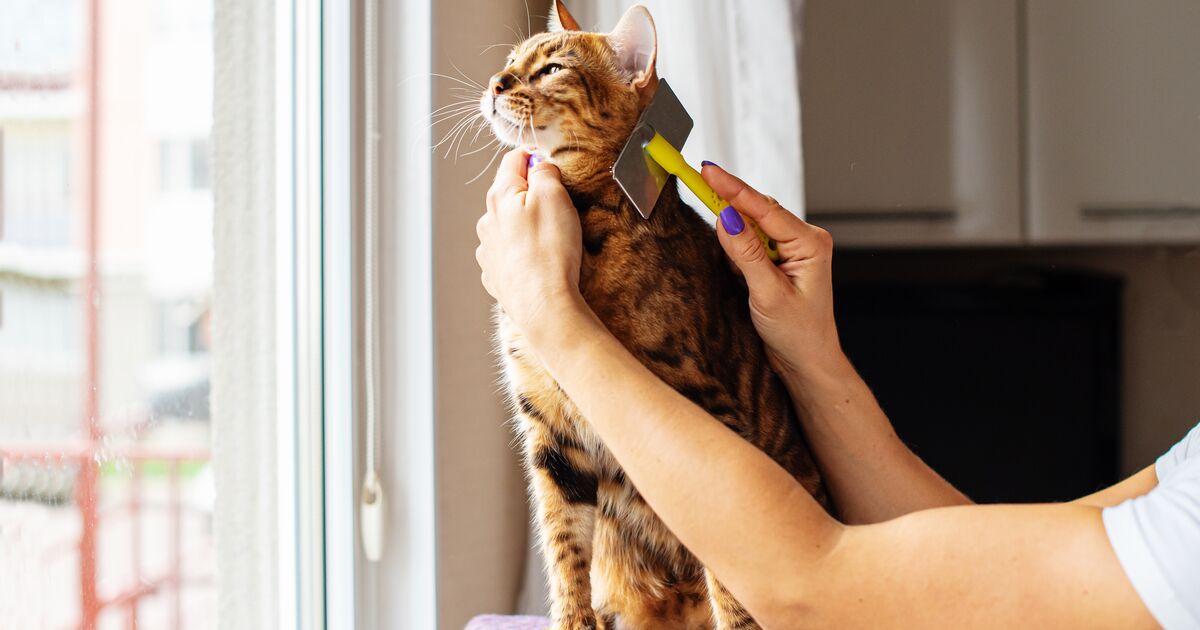
Now, let’s get on to our range of top cat grooming tips!
1. Start As A Kitten
Ideally, you should aim to introduce grooming early in kittenhood. This helps cats learn how grooming feels and what’s involved, all while they learn about the rest of the world around them.
When first brushing a cat, start by simply placing the brush on the ground and rewarding your cat as they calmly investigate. From there, begin to move the brush closer, and then just touch your cat gently with the brush. Finally, you can begin brushing, going gently and gradually. Add to the areas you groom over time to help your cat or kitten remain comfortable throughout. You should also use positive reinforcement to ensure your cat associates the experience with rewards and treats.
2. The Cat Grooming Basics
Regularly brushing a cat, ideally weekly, is necessary for removing debris and dead hair, checking for knots, and stimulating circulation. We recommend using a cat bristle brush or grooming glove for this. Remember to brush in the direction of the fur growth and start with areas your cat tolerates best. If your cat shows signs of stress or discomfort, it’s better to pause and try again later.

3. Bath Time
While cats typically don’t require baths (or like them, for that matter!), their coats can sometimes get covered in something that needs to be washed out. If cat bathing is needed, make sure to use a shampoo that has been specially formulated for cats and their skin.
4. Trimming Claws
Claw maintenance can be important for many cats as they use their claws to climb. That said, trimming your cat’s claws can be a difficult task! In general, nail clipping is often not required for active cats who have access to scratching posts and objects because their claws will wear down naturally. Older cats, however, may not be so active or their claws may be naturally tougher, making clipping their nails a necessary part of their care.
To approach this, you should introduce nail clipping gradually. Start with just touching the top of the paw, then move to touch all around the paw and extend your cat’s claws. Reward any calm interest as you go before introducing the sound of the clippers cutting spaghetti. Then, move the clippers closer while you hold your cat’s paw. It’s a delicate process but be patient and you should eventually reach a stage where your cat is happy to have their nails trimmed!

Remember to use positive reinforcement throughout and go at your cat’s pace for learning. Don’t move on to the next step until they’re routinely comfortable with the one before. Happy Snack by FELIWAY can also provide a delicious distraction, letting your cat lick as it squeezes out of the packet or by serving on a spoon.
Avoid cutting too close to the sensitive pink base of the nail (the quick) and stick to trimming just the sharp tip. If you do catch the quick and there’s any bleeding, this can be stopped with a styptic stick. It’s a good idea to have some to hand before you start clipping just in case there are any accidents.
5. Eye Care And Ear Check-Ups
Most cats won’t need special eye and ear care, but always be vigilant. If you do notice anything unusual around these areas, it’s best to consult a vet. Don’t be tempted to use cotton wool or any intrusive methods for cleaning as this shouldn’t be needed and there’s a strong risk you’ll do more harm than good.
6. Dental Health
When it comes to cat grooming, don’t forget brushing their teeth! Many people don’t realise this is possible but it’s actually one of the best ways to care for a cat’s teeth.
As with brushing a cat, toothbrushing is best introduced as a kitten. Make sure to use a cat toothpaste and consider beginning by simply brushing with a finger. This can avoid accidentally jabbing your cat’s mouth with the end of a toothbrush. Then, as your cat becomes more comfortable with the experience, you can upgrade to a finger brush.
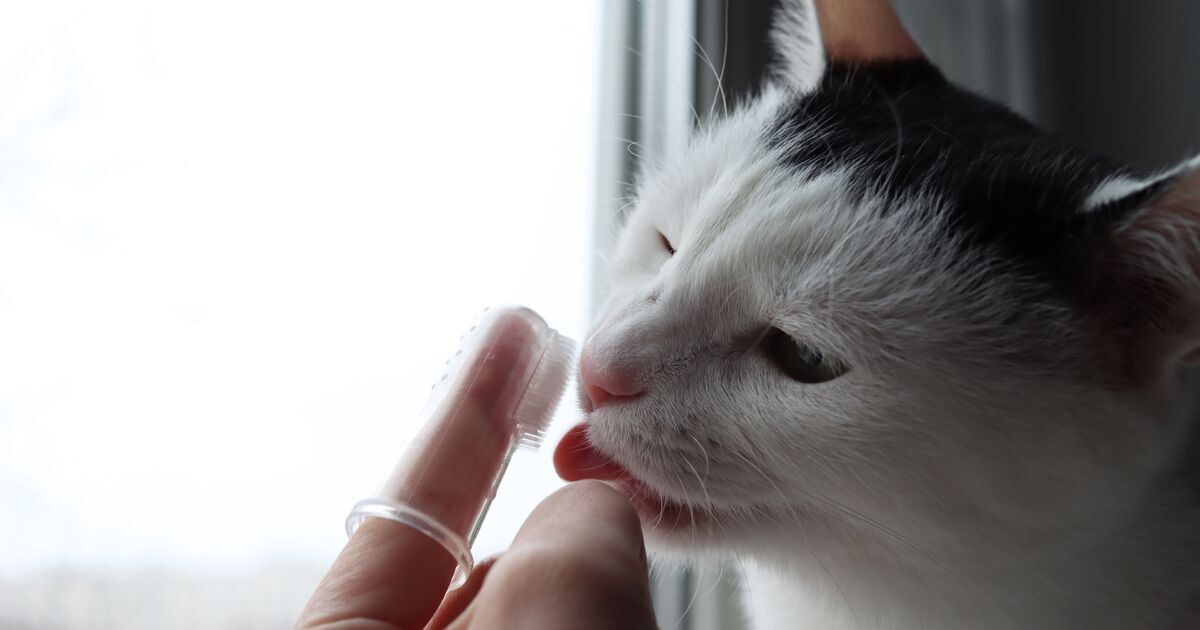
A Helping Hand From FELIWAY
Remember that FELIWAY Optimum and Happy Snack by FELIWAY can both make the cat grooming process a whole lot smoother. As well as creating a relaxing grooming environment, Happy Snack can also provide a delicious and comforting distraction whenever it’s needed. Plus, it’s a perfect way to build your bond together!
On the lookout for more cat care tips and advice? Check out our other blogs for a range of fascinating insights. We cover everything from how we can support cats in the home to how we can even train cats to respond to cues! You can also stay informed with all the latest updates from FELIWAY by signing up to our newsletter.







